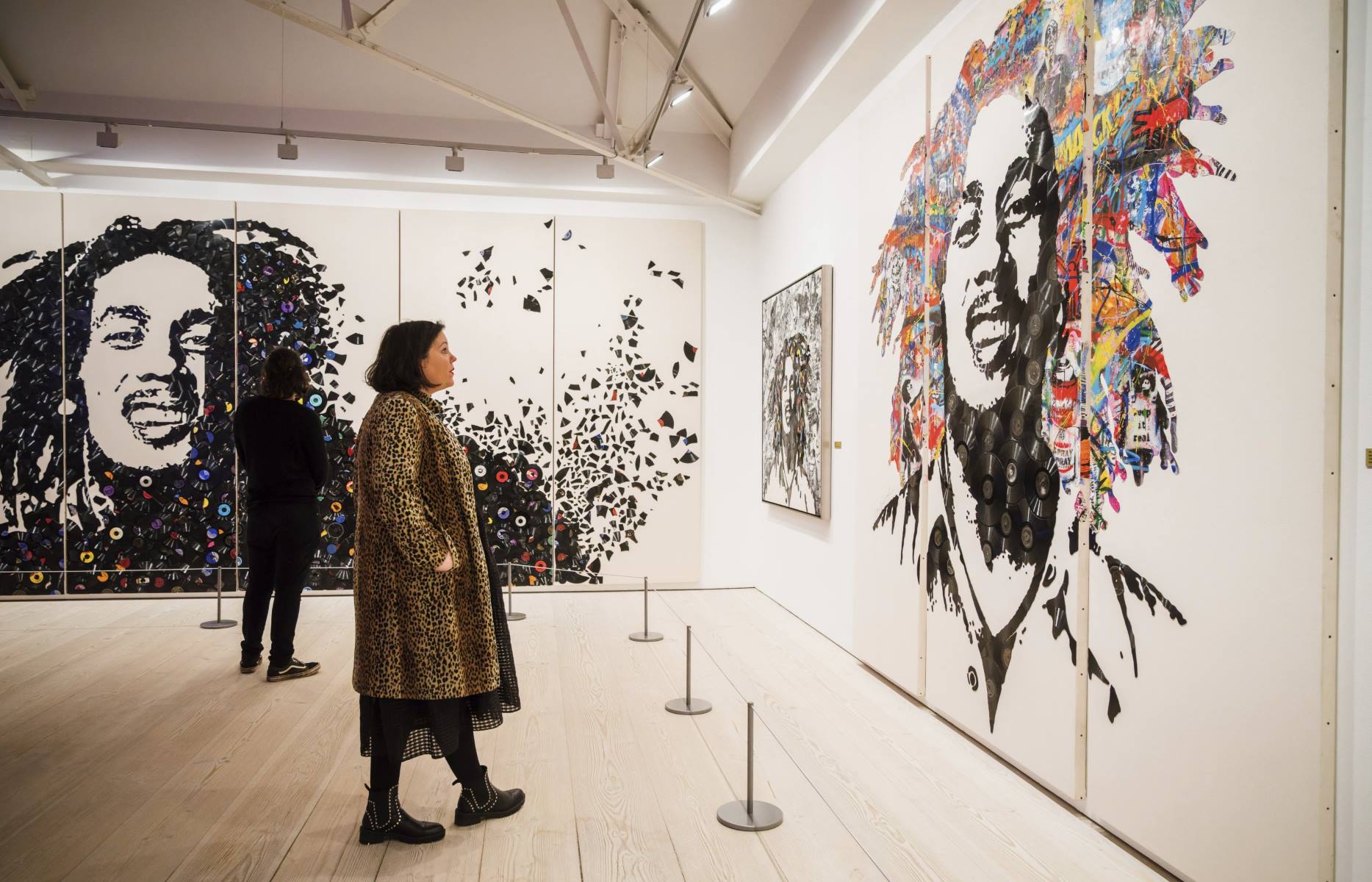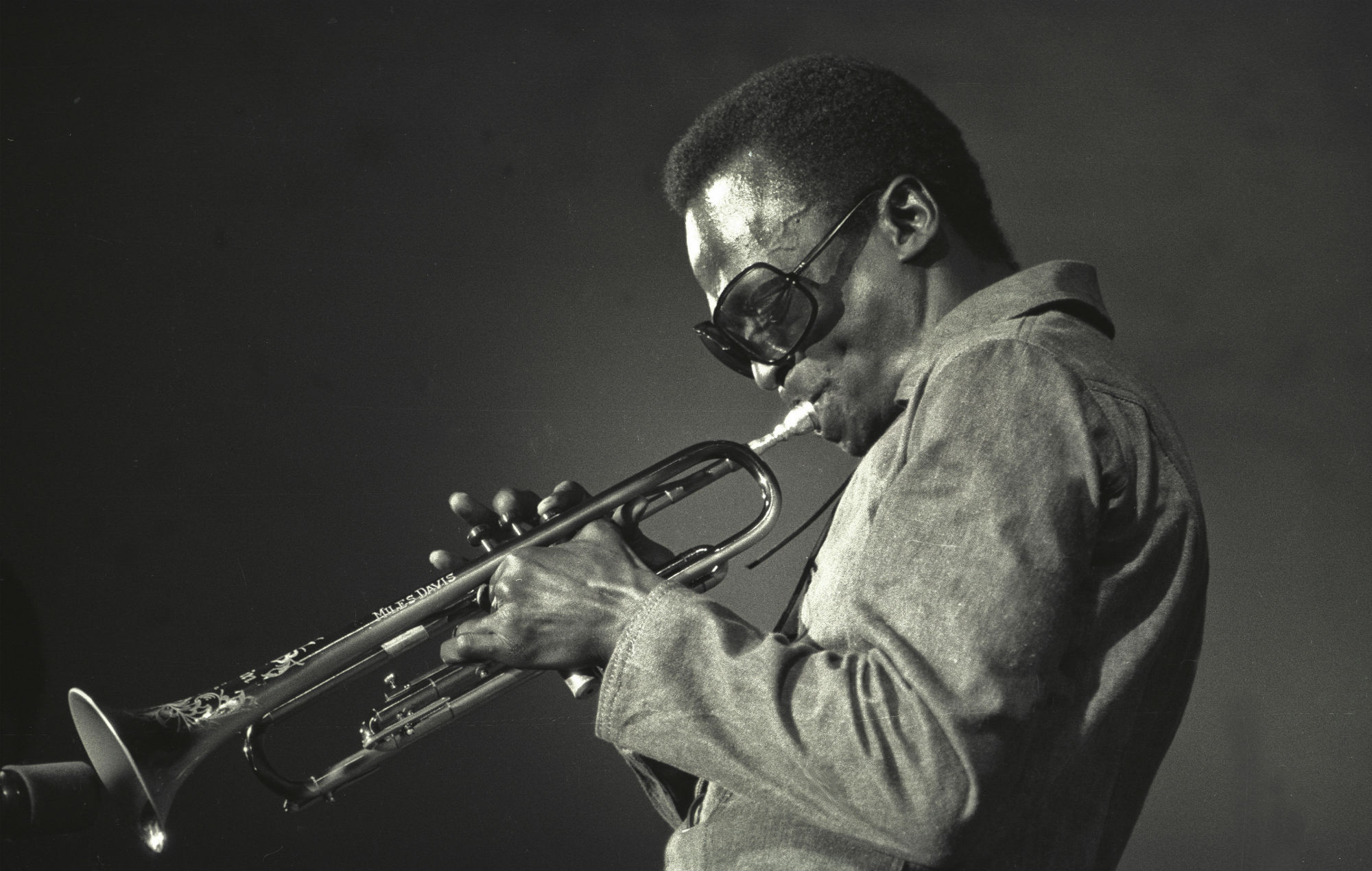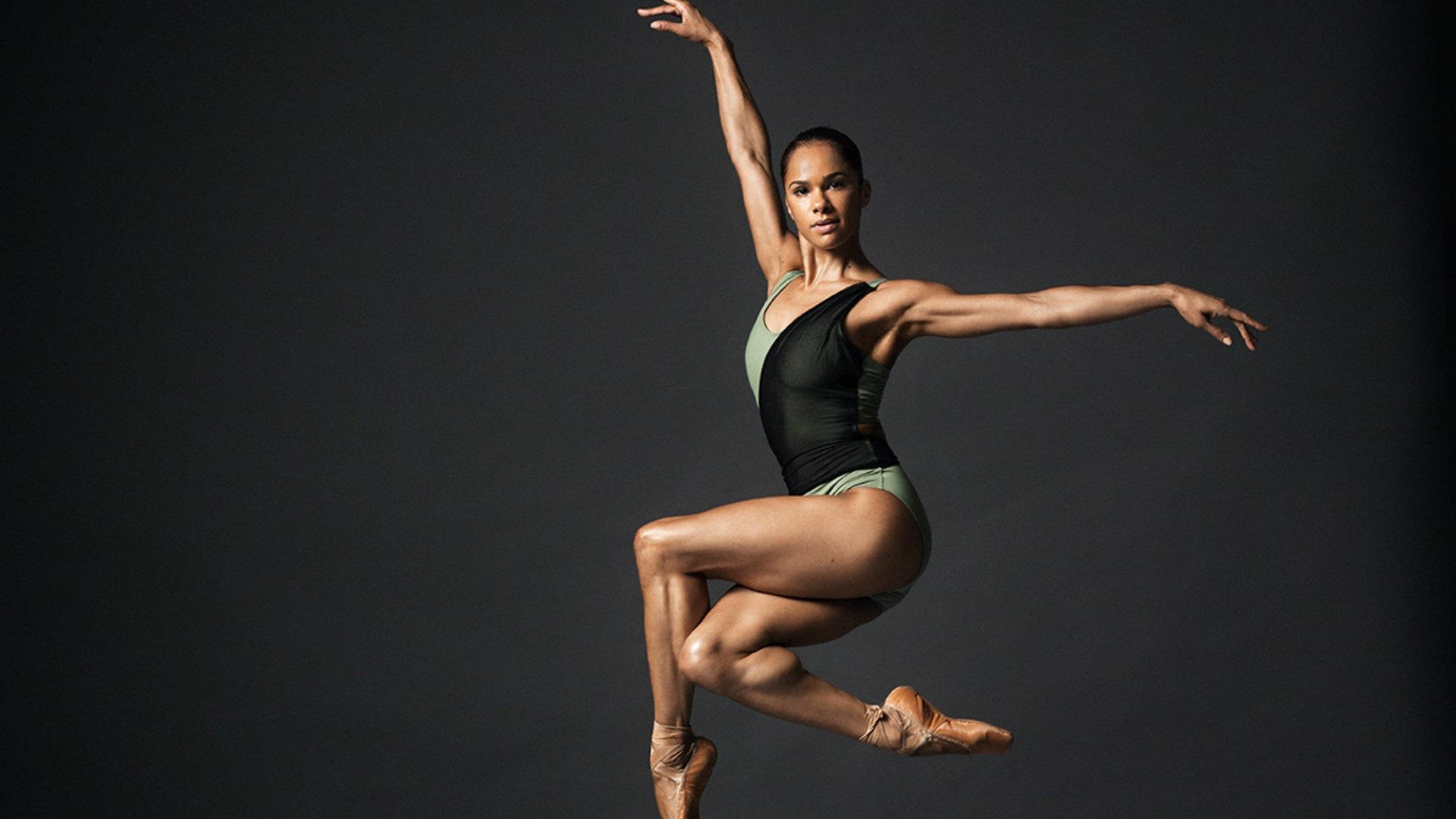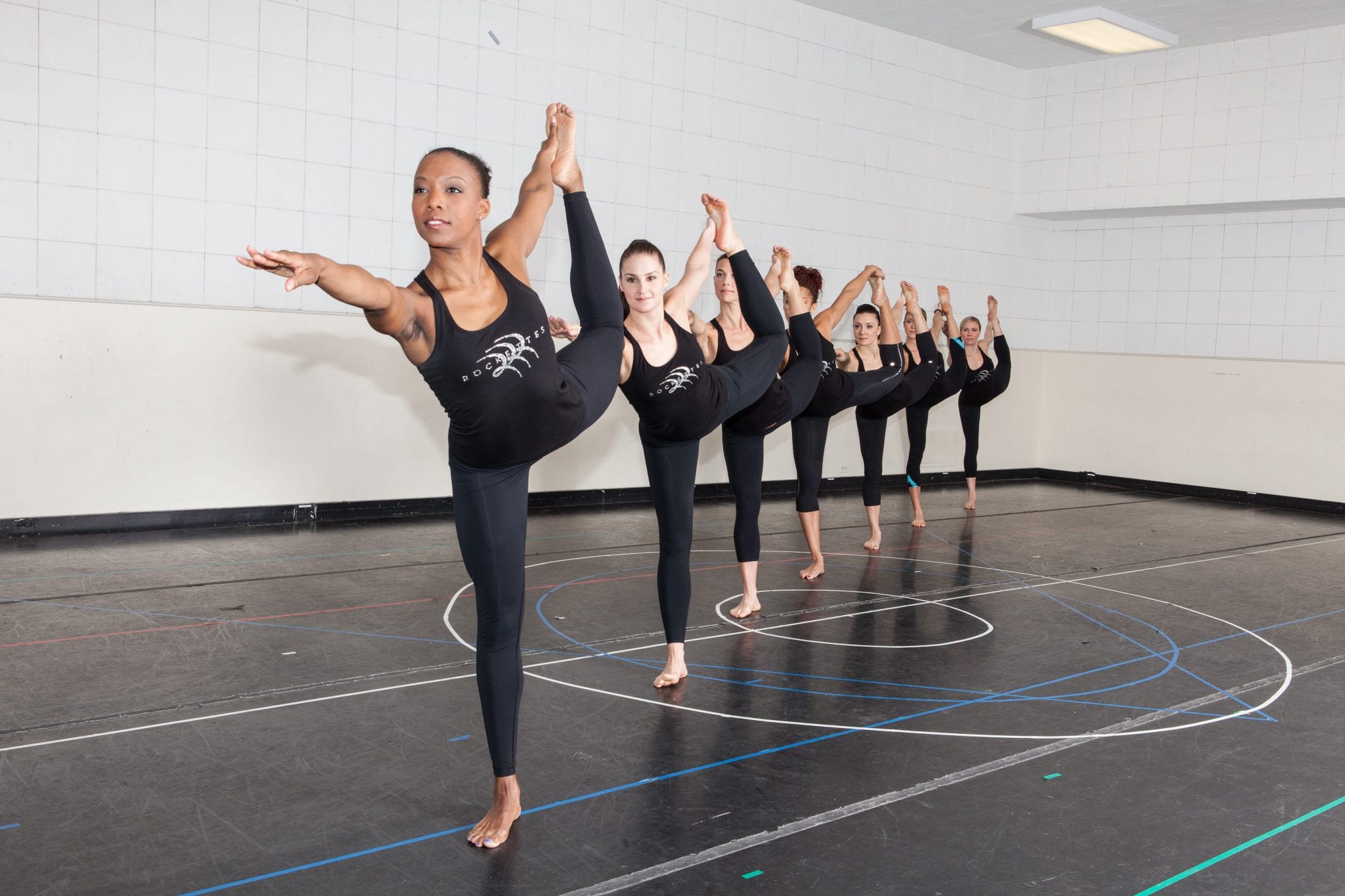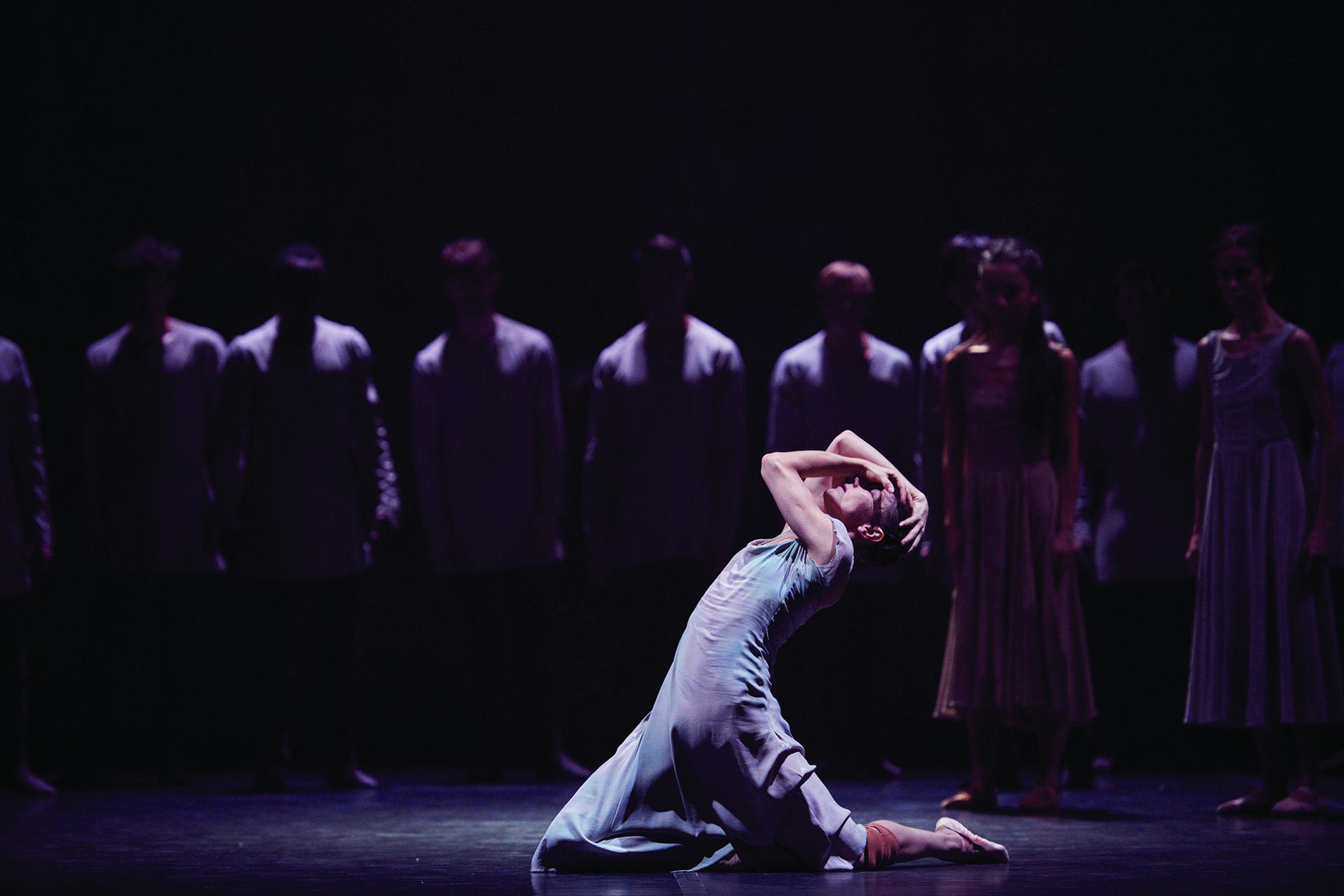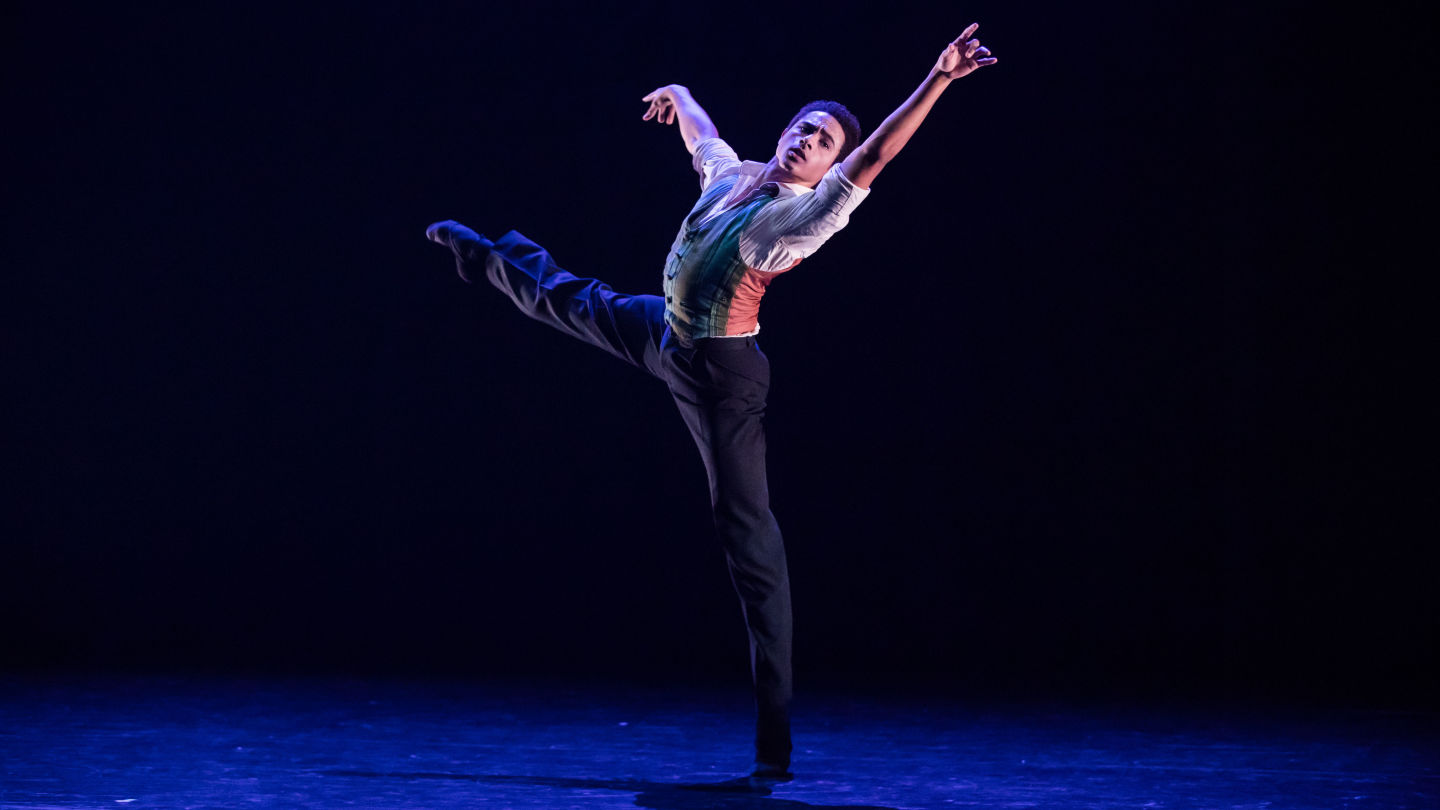Home>Events & Info>Ballet>How Popular Is Ballet
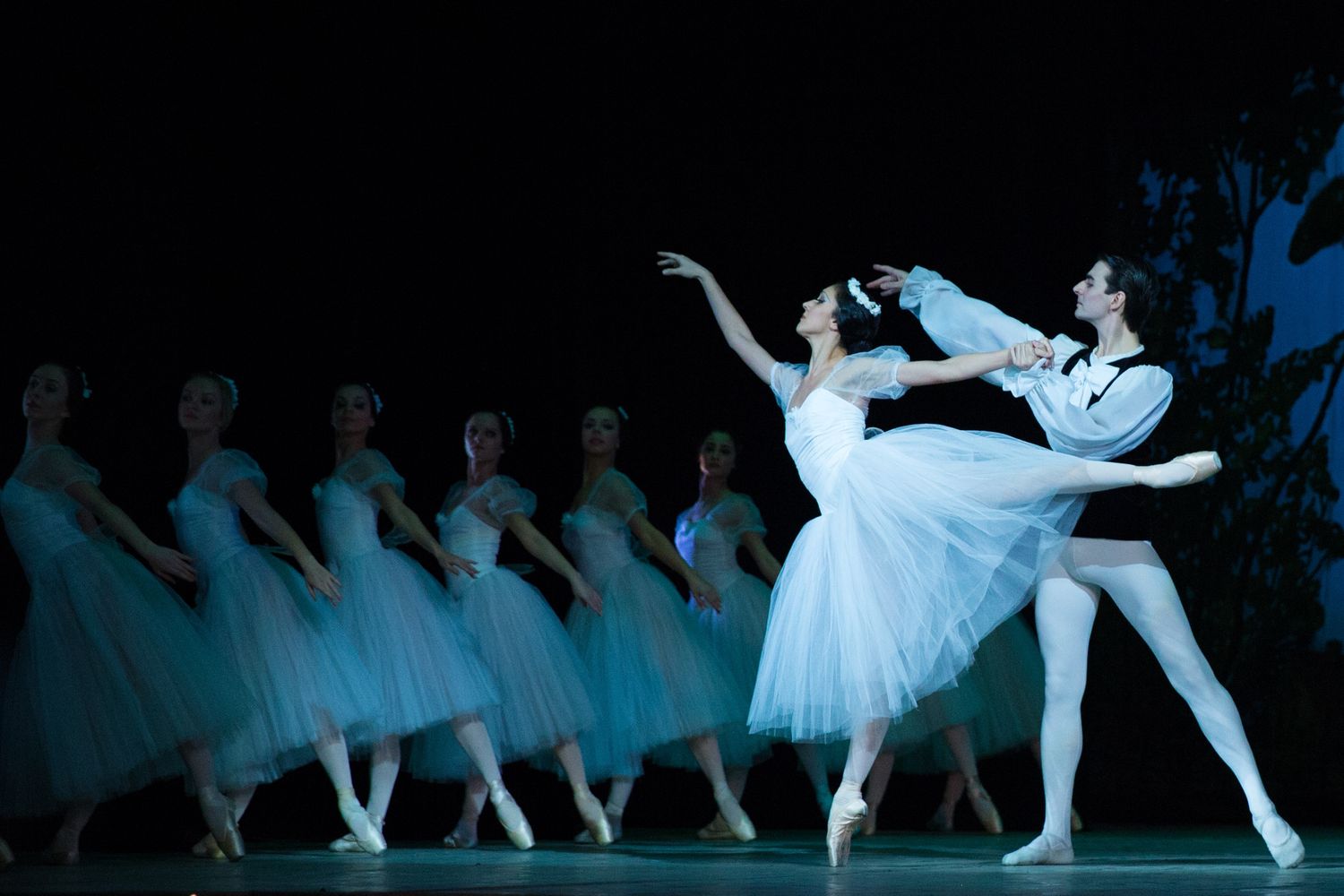

Ballet
How Popular Is Ballet
Modified: January 22, 2024
Discover the popularity of ballet and its impact on the world of dance. Explore the enchanting world of ballet from its rich history to its enduring legacy.
(Many of the links in this article redirect to a specific reviewed product. Your purchase of these products through affiliate links helps to generate commission for AudioLover.com, at no extra cost. Learn more)
Table of Contents
Introduction
Ballet is a captivating art form that has enthralled audiences for centuries. With its graceful movements, exquisite costumes, and emotive storytelling, ballet has become synonymous with beauty and elegance. But just how popular is ballet in modern times?
Despite the rise of other performing arts and entertainment options, ballet continues to maintain a dedicated following around the world. Its rich history, technical mastery, and ability to evoke emotions make it a beloved art form for both performers and spectators alike.
From its humble beginnings in the courts of Renaissance Italy to the grand stages of renowned ballet companies today, ballet has evolved and adapted over time. It has spawned different styles and techniques, attracting a diverse range of artists and audiences.
In this article, we will explore the popularity of ballet and delve into its historical origins, the evolution of different ballet styles, the appeal and demographics of its audience, and its cultural significance. We will also examine how ballet has permeated popular culture, from movies and television to fashion and advertising.
So, if you are curious about the enduring allure of ballet and its place in the modern world, join us on this journey as we explore the rhythmic and enchanting world of this timeless dance form.
Historical Origins of Ballet
Ballet originated in the royal courts of Renaissance Italy in the 15th century. It began as a form of entertainment for nobles and aristocrats, combining music, dance, and theatrical elements. The term “ballet” comes from the Italian word “ballare,” meaning to dance.
Initially, ballet performances were more like court spectacles, incorporating lavish costumes, elaborate sets, and complex dance routines. These early ballets were often influenced by mythological or biblical themes and were performed in masquerade balls and royal festivities.
However, it wasn’t until the 17th century in France that ballet began to establish itself as a distinct art form. King Louis XIV, an avid dancer himself, played a significant role in the development and evolution of ballet. He founded the world’s first ballet academy, known as the Académie Royale de Danse, in 1661, which later became the Paris Opera Ballet.
Under Louis XIV’s patronage, ballet gained prominence as a professional art form with formalized technique and training. The academy introduced the five positions of the feet, codified ballet vocabulary, and established rigorous training methods. This system laid the foundation for the technical precision and artistry that define ballet to this day.
During the 18th century, ballet continued to evolve in France and spread across Europe. It became a mainstream form of entertainment, performed both in royal courts and public theaters. Ballets like “La Sylphide” and “Giselle” became popular across the continent, showcasing the expressive storytelling potential of the art form.
In the 19th century, ballet underwent a transformation known as the Romantic era. This period saw a shift towards more ethereal and emotional themes, with an emphasis on female dancers as the central figures. Iconic ballets such as “Swan Lake” and “The Nutcracker” were created during this time and remain beloved classics today.
As ballet spread throughout Europe and eventually to the rest of the world, it incorporated influences from different cultures and embraced innovation. Ballet companies emerged globally, from the Bolshoi Ballet in Russia to the Royal Ballet in England, establishing their unique styles and repertoire.
Today, ballet continues to evolve and push boundaries while remaining rooted in its rich historical tradition. It serves as a testament to the enduring power and beauty of an art form that has captivated audiences for centuries.
Evolution of Ballet Styles
Throughout its history, ballet has undergone significant transformations, giving rise to different styles and techniques. These various styles showcase the versatility and adaptability of the art form, ensuring its continued relevance in the modern world.
Classical Ballet: Classical ballet, characterized by its traditional and formal style, is perhaps the most well-known and recognizable form of ballet. It embodies the elegance, grace, and precision that ballet is renowned for. With its emphasis on clean lines, intricate footwork, and storytelling through movement, classical ballet has produced iconic works such as “Swan Lake,” “The Sleeping Beauty,” and “Don Quixote.”
Neoclassical Ballet: In the 20th century, choreographers like George Balanchine pushed the boundaries of classical ballet with their innovative approaches. Neoclassical ballet retains the classical technique but incorporates more abstract movements, asymmetrical patterns, and unconventional music choices. Balanchine’s ballets, such as “The Four Temperaments” and “Agon,” revolutionized the art form and continue to influence choreographers today.
Contemporary Ballet: Contemporary ballet blends classical ballet technique with modern dance styles, allowing for more freedom and experimentation. It combines elements of ballet, jazz, and contemporary dance to create unique and expressive movements. Choreographers like William Forsythe and Jiří Kylián are pioneers in this style, challenging traditional notions of ballet while maintaining its foundation.
Ballet Russes: The Ballet Russes, a groundbreaking ballet company founded by Sergei Diaghilev in the early 20th century, played a pivotal role in the evolution of ballet. Under Diaghilev’s direction, the company collaborated with influential artists and composers, such as Pablo Picasso and Igor Stravinsky, to create bold and avant-garde productions. The Ballet Russes introduced new ideas and pushed the boundaries of ballet with its innovative choreography and design.
Inclusivity and Diversity: In recent years, there has been a growing emphasis on inclusivity and diversity within the ballet world. Ballet companies and schools are actively working to break down traditional barriers and promote inclusivity in terms of ethnicity, body type, and gender. This movement aims to ensure that ballet is accessible to and representative of a wider range of participants and audiences.
As the world continues to change, ballet remains a dynamic art form, constantly evolving and embracing new influences. With each generation of dancers and choreographers, ballet pushes the boundaries of what is possible, ensuring its relevance and longevity in the ever-changing landscape of the performing arts.
Popular Ballet Companies
Across the globe, numerous ballet companies have gained recognition for their exceptional artistry, technical skill, and dedication to the craft. These companies serve as cultural ambassadors, captivating audiences with their breathtaking performances and preserving the legacy of ballet. Here are some of the most renowned ballet companies in the world:
Royal Ballet (London, United Kingdom): Based at the Royal Opera House in Covent Garden, the Royal Ballet is one of the most prestigious ballet companies globally. Known for its classical repertoire and world-class dancers, the company has a rich history and has nurtured exceptional talents like Margot Fonteyn and Natalia Makarova.
Bolshoi Ballet (Moscow, Russia): The Bolshoi Ballet, with its legendary history and captivating performances, is revered as one of the world’s leading ballet companies. Founded in 1776, the company is known for its grand scale productions, technical brilliance, and the rich Russian ballet tradition.
Paris Opera Ballet (Paris, France): The Paris Opera Ballet, founded in 1669, is the oldest national ballet company in the world. With its classical repertoire and commitment to preserving the French ballet tradition, the company has produced renowned dancers like Sylvie Guillem and Aurélie Dupont.
American Ballet Theatre (New York, United States): Based in New York City, the American Ballet Theatre (ABT) has played a significant role in developing ballet in the United States. Known for its diverse repertoire and exceptional dancers, ABT is regarded as one of the world’s premier ballet companies.
St. Petersburg Ballet Theatre (St. Petersburg, Russia): St. Petersburg Ballet Theatre showcases the rich heritage of Russian ballet. With its focus on classical works such as “Swan Lake” and “The Nutcracker,” the company delights audiences with their exquisite technique and breathtaking artistry.
National Ballet of Canada (Toronto, Canada): The National Ballet of Canada is celebrated for its exceptional performances and commitment to both classical and contemporary ballet. With a diverse repertoire, the company has garnered international acclaim and showcases the incredible talent of Canadian dancers.
Australian Ballet (Melbourne and Sydney, Australia): The Australian Ballet showcases the unique fusion of classical and contemporary ballet styles. With its commitment to innovation and artistic excellence, the company has established a prominent presence on the international ballet stage.
These are just a few examples of the many esteemed ballet companies around the world. Each company brings its own distinct flair, repertoire, and artistic vision to the stage, ensuring that the beauty and artistry of ballet are celebrated in all corners of the globe.
Famous Ballets and Choreographers
Ballet has produced countless iconic performances and legendary choreographers who have left an indelible mark on the art form. These ballets and choreographers have pushed the boundaries of creativity and storytelling, captivating audiences with their innovation and artistry. Here are some of the most famous ballets and choreographers:
“Swan Lake” (Choreography by Marius Petipa and Lev Ivanov): Perhaps the most beloved and iconic ballet of all time, “Swan Lake” tells the tale of Odette, a princess cursed to be a swan by day and a young woman by night. The exquisite choreography, coupled with Tchaikovsky’s enchanting score, has made this ballet a timeless masterpiece that continues to captivate audiences worldwide.
“The Nutcracker” (Choreography by Lev Ivanov): A beloved holiday tradition and a staple of the ballet repertoire, “The Nutcracker” transports audiences to a magical world of toys coming to life and a young girl’s journey through dreamlike adventures. Ivanov’s choreography beautifully showcases the enchantment and wonder of this beloved ballet, set to Tchaikovsky’s iconic score.
George Balanchine: Often considered the father of American ballet, George Balanchine revolutionized the art form with his neoclassical approach. Balanchine’s choreographic works, such as “Apollo,” “Serenade,” and “The Four Temperaments,” embraced athleticism, speed, and musicality, while still paying homage to classical technique. His legacy and influence resonate throughout the world of dance today.
Pina Bausch: Pina Bausch, a German choreographer, is renowned for her groundbreaking work in contemporary ballet. Her style combined dance, theater, and emotional storytelling, creating powerful and evocative performances. Bausch’s most notable works include “Café Müller” and “The Rite of Spring,” which challenged traditional notions of ballet and pushed the boundaries of what dance could express.
Jerome Robbins: Jerome Robbins was an American choreographer known for his versatility and creative vision. He seamlessly transitioned between classical ballet and Broadway, choreographing iconic works such as “West Side Story” and “Fancy Free.” Robbins brought a unique fusion of storytelling and movement to his ballets, ensuring his lasting influence in both theater and dance.
Mats Ek: Swedish choreographer Mats Ek is celebrated for his innovative and thought-provoking works. His choreographic style incorporates elements of contemporary dance, physical theater, and multimedia, challenging traditional ballet conventions. Works like “Giselle” and “Swan Lake” reimagined these classic ballets with a modern twist, breathing new life into them.
These ballets and choreographers represent just a fraction of the incredible contributions made to the world of ballet. Each one has left an enduring legacy, pushing the boundaries of the art form and captivating audiences with their unique artistic visions and storytelling abilities.
Ballet’s Influence in Popular Culture
Ballet has had a profound impact on popular culture, permeating various forms of entertainment and inspiring artists across different mediums. Its influence can be seen in movies, television, fashion, advertising, and even music videos. The timeless beauty and grace of ballet have captured the imagination of audiences and artists alike, leaving a lasting impression on popular culture.
Movies: Ballet has been a recurring theme in numerous films, with its elegant movements and emotive storytelling lending themselves to cinematic storytelling. From classic films like “The Red Shoes” and “Black Swan” to family favorites like “Billy Elliot” and “The Turning Point,” ballet has provided a rich backdrop for compelling narratives and compelling characters.
Television: Ballet has also made its mark on the small screen, with popular television shows like “Flesh and Bone,” “Breaking Pointe,” and “Center Stage: On Pointe” showcasing the rigorous training, passion, and drama that dancers experience in their pursuit of excellence. Additionally, ballet competitions, such as “So You Think You Can Dance” and “World of Dance,” introduce ballet to wider audiences and elevate its presence in popular culture.
Fashion: The inherent grace, poise, and beauty of ballet have seeped into the world of fashion. Ballet-inspired designs, such as delicate tutu-like skirts, ballet flats, and leotards, have become fashion staples. Fashion shows and editorials often draw inspiration from ballet, incorporating flowing fabrics, pastel hues, and ethereal elements reminiscent of the dance form’s aesthetic.
Advertising: Advertisers frequently draw upon ballet’s allure to create captivating campaigns. Ballet dancers have been featured in commercials for various products, from perfume to luxury brands, showcasing the elegance and precision of the art form. These advertisements often capture the essence of ballet’s beauty to evoke emotions and convey the desired message.
Music Videos: Ballet’s influence can even be found in music videos, with artists incorporating balletic movements and themes into their visuals. From Madonna’s “Material Girl” to Sia’s “Elastic Heart” and Taylor Swift’s “Shake It Off,” ballet-inspired choreography adds a touch of elegance and artistry to these music videos, captivating viewers with its fluidity and grace.
Ballet’s influence in popular culture goes beyond mere aesthetics. It represents the pursuit of excellence, the dedication required for mastery, and the power of storytelling through movement. Its presence in various forms of popular culture has not only elevated appreciation for ballet as an art form but has also broadened its appeal and relevance to wider audiences, cementing its place as a cultural phenomenon.
The Appeal and Demographics of Ballet
Ballet has a timeless allure that captivates people of all ages and backgrounds. Its unique blend of athleticism, artistry, and storytelling creates a universal appeal, drawing in audiences from around the world. Let’s explore the reasons behind the enduring popularity of ballet and the diverse demographics it attracts.
Artistic Beauty: One of the primary appeals of ballet is its sheer beauty. The combination of graceful movements, exquisite costumes, and visually stunning sets creates a feast for the eyes. Ballet’s ability to transport audiences to fantastical worlds, evoke emotions, and convey narratives through movement is truly captivating.
Technical Mastery: The technical prowess required in ballet is awe-inspiring. Dancers undergo years of rigorous training to achieve strength, flexibility, and precision in their movements. Audiences appreciate the skill and dedication that ballet demands, marveling at the seamless transitions, intricate footwork, and breathtaking lifts executed on stage.
Emotional Expression: Ballet has a unique ability to elicit deep emotions from both performers and spectators. Through subtle gestures, facial expressions, and body language, dancers convey a range of emotions, effectively communicating complex narratives and touching the hearts of the audience. The ability to convey stories and emotions through movement is a remarkable aspect of ballet’s appeal.
Escapism and Fantasy: Ballet provides an escape from reality, taking audiences into a world of enchantment and wonder. Whether it’s the ethereal realm of “Swan Lake” or the magical journey of “The Nutcracker,” ballet invites audiences to immerse themselves in the beauty of the story and the artistry of the dancers, allowing for a temporary escape from the everyday.
Demographics: While ballet does have a reputation for being elite and exclusive, it has made strides in becoming more accessible and diverse. Ballet appeals to a wide range of age groups, from young children taking their first ballet classes to adults who appreciate the artistry and athleticism of the dancers. Efforts to promote inclusivity have made ballet more welcoming to individuals of different backgrounds, body types, and abilities.
Ballet’s appeal cuts across demographics, attracting both young and mature audiences. It appeals to those who appreciate the art form’s history, technique, and aesthetic beauty, as well as those who are fascinated by the emotional storytelling and the sheer athleticism displayed by the dancers on stage. While ballet may have its roots in the aristocracy, it has evolved into an art form that speaks to people from all walks of life.
Ultimately, ballet’s enduring appeal lies in its ability to transport audiences to a world of beauty, emotion, and awe-inspiring artistry. It continues to captivate and inspire, drawing in a diverse range of individuals who are moved by its grace and power.
Barriers to Ballet’s Popularity
Ballet, while beloved by many, does face certain barriers that can hinder its popularity and accessibility. These barriers contribute to the perception that ballet is an exclusive and elitist art form, limiting its reach to a broader audience. Let’s explore some of the common barriers to ballet’s popularity:
Cost: Ballet can be an expensive pursuit, both for participants and audiences. The cost of ballet training, including classes, costumes, and shoes, can be prohibitive for many aspiring dancers, particularly those from lower-income backgrounds. Ticket prices for ballet performances can also be a deterrent for some potential audience members, especially when compared to other forms of entertainment.
Perception of Elitism: Ballet has long been associated with exclusivity and elitism. The image of a strict and rigorous ballet academy, combined with its historical connection to the aristocracy, has created an impression of inaccessibility. This perception can discourage individuals who do not fit the stereotypical mold of a ballet dancer or who do not have access to ballet education and opportunities.
Limited Diversity: Historically, the lack of diversity in ballet has posed a significant barrier to its popularity. The industry has been criticized for its limited representation of different ethnicities, body types, and gender identities. This lack of diversity can alienate potential participants and audiences who do not see themselves represented on stage, hindering the art form’s appeal and accessibility.
Limited Availability: Ballet performances and training opportunities may be limited in certain regions, making it inaccessible to individuals outside major cities or areas without established ballet companies or schools. Limited accessibility can prevent those with a genuine interest in ballet from pursuing their passion or engaging with the art form.
Physical Demands: The physical demands of ballet are rigorous and require training from a young age. This can be perceived as a barrier, particularly for individuals who have not had the opportunity to start ballet training at an early age. Ballet’s emphasis on flexibility, strength, and technique can make it challenging for late starters or those with physical limitations to fully engage with the art form.
Despite these barriers, efforts are being made within the ballet community to break down these limitations and make the art form more accessible and inclusive. Initiatives such as scholarships, outreach programs, and diversity-focused initiatives aim to broaden ballet’s appeal and create pathways for individuals from all backgrounds to participate and enjoy ballet.
By addressing these barriers and promoting inclusivity, ballet can become more accessible, reaching a larger audience and enriching the lives of individuals who may not have previously had the opportunity to engage with this beautiful art form.
Ballet’s Cultural Significance
Ballet holds a significant place in cultural history, serving as a reflection of societal values, artistic expression, and heritage. Beyond its aesthetic beauty, ballet carries cultural significance that has shaped and influenced communities around the world. Let’s explore the various ways ballet has contributed to cultural heritage:
Preservation of Traditions: Ballet has played a crucial role in preserving cultural traditions and narratives. Classical ballets like “Swan Lake,” “The Nutcracker,” and “Coppélia” bring to life timeless stories that have been passed down through generations. These ballets embody the cultural essence and folklore of the regions they originate from, ensuring that historical narratives are preserved and celebrated in a timeless art form.
Identification of National Identity: Ballet often becomes intertwined with a nation’s cultural identity. Many countries have their own national ballet companies, which showcase the unique heritage and artistic vision of their respective nations. For example, Russian ballet has long been synonymous with the country’s cultural identity, evoking images of grandeur and technical mastery.
Cultural Exchange and Diplomacy: Ballet has served as a powerful tool for cultural exchange and diplomacy. Ballet companies embarking on international tours not only share their artistry but also facilitate cultural understanding and dialogue. Performances in foreign countries expose audiences to different cultural perspectives, fostering connections and mutual appreciation.
Human Expression and Emotion: Ballet transcends language barriers, enabling dancers to communicate emotions and stories through physical movement. It has the power to evoke profound emotions, provoke introspection, and offer audiences a lens into the human experience. Ballet’s universal appeal allows for connection and understanding between people from different backgrounds and cultures.
Education and Inspiration: Ballet can inspire future generations through its dedication to discipline, perseverance, and artistic excellence. Its emphasis on hard work, commitment, and teamwork instills valuable life skills in young dancers. Ballet education introduces children to the arts, fostering creativity and a love for culture that can transcend into other areas of their lives.
Ballet’s cultural significance extends beyond the stage to other art forms and disciplines. It inspires painters, composers, filmmakers, and fashion designers, creating a rich tapestry of interconnected art. The visual and emotive qualities of ballet have influenced countless artists, resulting in masterful collaborations and cross-pollination of artistic expression.
Moreover, ballet’s enduring legacy showcases the resilience and human spirit. Its ability to evolve, adapt, and maintain relevance over centuries is a testament to its significance in cultural history. By celebrating and supporting ballet, society continues to honor and preserve the artistic achievements and cultural heritage it represents.
Conclusion
Ballet, with its timeless beauty and captivating artistry, holds a significant place in the world of performing arts. From its humble origins in the courts of Renaissance Italy to the grand stages of renowned ballet companies today, ballet continues to enchant audiences across the globe.
Throughout its history, ballet has evolved and adapted, giving rise to various styles and techniques that showcase its versatility and relevance in the modern world. The appeal of ballet lies in its artistic beauty, technical mastery, and ability to convey emotions and stories through movement.
Ballet’s cultural significance goes beyond its aesthetic charm. It preserves cultural traditions, represents national identities, and serves as a platform for cultural exchange and diplomacy. Ballet educates and inspires future generations, fostering discipline, creativity, and an appreciation for the arts.
Despite certain barriers that can limit its accessibility and popularity, efforts are being made within the ballet community to promote inclusivity, diversity, and affordability. By addressing these barriers, ballet strives to reach a broader audience and ensure its relevance for generations to come.
As ballet continues to captivate hearts and souls, it influences popular culture, inspiring filmmakers, fashion designers, and musicians to incorporate its artistry into their work. Ballet’s enduring legacy is a testament to its cultural significance and its ability to transcend language and boundaries, fostering connections and understanding among people from diverse backgrounds.
In conclusion, ballet remains a cherished art form with a profound impact on the world of performing arts and cultural heritage. Its timeless beauty, artistic expression, and storytelling continue to captivate audiences, ensuring that ballet will maintain its place as a cherished and revered art form for generations to come.

